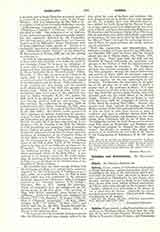

Sabina (SABINENSIS), a suburbicarian diocese, with residence in Magliano Sabino, formed from the territory of the three ancient dioceses: Forum novum (S. Maria in Vescovio), Cures (Corese), and Nomentum (Mentana). When these sees were united, the diocese was called Sabina because it included that part of Sabina which at the time of the Lombard invasion remained united to the Roman territory (Sabina Romana), while the remainder became part of the Duchy of Spoleto. Cures was the ancient capital of the Sabines, which territory lay between the Tiber, the Anio, and the Apennines (Gran Sasso e Maiella). Nomentum is frequently mentioned in ancient Roman history. After Charlemagne, Sabina was ruled by a count; later its territory was divided between some barons and the Abbot of Farfa; the Senate of Rome exercised feudal jurisdiction over its territory, e.g. Magliano. During the persecutions Nomentum had two cemeteries, one at St. Restitutus, a third century martyr, at the sixteenth mile on the Via Nomentana, belonging to Justa, a pious matron, and one at Sts. Primus and Felicianus, martyrs under Diocletian, at the fourteenth and fifteenth miles. Bishop Stephanus, a contemporary of St. Restitutus, is mentioned in the Acts of the martyr. Ursus is the first known Bishop of Nomentum (415). Others are known from Gratianus (593) till St. Gregory the Great united the Sees of Cures and Nomentum. Tiberius (465) was the first Bishop of Cures, “called also bishops of Sabina or of St. Anthimus, as that martyr’s basilica, adjoining the bishop’s residence, was all that remained of the town in the fifth century”. It was destroyed in 870, and the city fell into decay. The last Bishop of Nomentum was Joannes, who assisted at the Council of Rome (964). The small town of Mentana arose around the castle of the Crescenzi and came into the hands of the Orsini. Here Garibaldi was defeated by the pontifical and French troops (1867).
In 984 Nomentum was united to the See of Forum Novum, called also Vicosabinas, situated on the Via Salaria, having bishops from the fifth century, e.g. Paulus (465). The dignity of “hebdomadary” bishop of the Lateran basilica was then conferred on the Bishop of Nomentum, the closest to Rome; later the Bishop of Sabina became a cardinal-bishop. The following deserve mention: Joannes (1044), afterwards Antipope Sylvester III; Gregory, legate to Emperor Henry IV in 1078; Cintius (1106) planned the imprisonment of Paschal II; Conrad (1153), later Anastasius IV; Conrad of Wittelsbach (1163), legate in the Holy Land and Germany; John (1202), legate; Peter (1216), legate against the Albigenses and in Syria; Gaufredo Castiglioni (1237), later Celestine IV; Guglielmo (1244), Bishop of Modena and apostle of Livonia and Lithuania; Guido Gros (1261), later Clement IV; Egidio Albornoz (1355); Guillaume d’Aigrefeuille (1768). During the Western Schism, the Avignon popes also created cardinal-bishops of Sabina: the transference of Giordano Orsini (1427) to the See of Ostia (1439) was the first example of the optatio still existing in regard to suburbicarian sees; Bessarione (1443); Amadeus of Savoy (1449-51), previously Antipope Felix V; Isidore (1452), former metropolitan of Kieff; John Torquemada (1464). Forum Novum, having recovered from its destruction in the Gothic war, was again destroyed in 876 by the Saracens and remained deserted for fifty-eight years. The basilica, at first dedicated to S. Valentine, was later restored under the title of S. Maria al Vescovio, but remained unimportant.
During the Avignon period only a few inhabitants remained, so Cardinal Oliviero Caraffa (1479) induced Alexander VI (1495) to transfer the episcopal residence to Magliano, erecting the collegiate church of that city into the cathedral. Magliano (Manlianum) overlooks the valley of the Tiber, on which river the inhabitants formerly carried on an extensive trade with Rome. Sixtus V caused the Ponte Felice to be constructed. The jealousy of the other Sabina cities caused Leo X to restore the title of cathedral to the church of Vescovio. Cardinal Paleotti established a convent for Reformed Friars Minor, later replaced by the Order of Mercy. In 1733 Clement XII suppressed the chapter. In the subterranean crypt of the church are many traces of frescoes which have been brought to light through the munificence of the present cardinal-bishop, among whose predecessors may be mentioned: Alessandro Farnese (1523), later Paul III; Lorenzo Campeggio (1537); G. P. Caraffa (1546), later Paul IV; Giovanni Morone (1561); Cristoforo Madruzzi (1562); Gio. Antonio Serbelloni (1578); Gabr. Paleotto (1591), a reformer of discipline and founder of the seminary; Pietro Aldobrandini (1620); Scipio Borghese (1629), who procured an auxiliary; Francesco Barberini (1645); Blessed Nicolò Albergati (1677); Pietro Ottoboni (1681), later Alexander VIII; Carlo Pio of Savoy (1683); Paluzio Altieri (1689); Ippolito Vincenti Carreri (1805), who died in exile in Paris; Lorenzo Litta (1814); Venerable Carlo Odescalchi (1833); Luigi Lambruschini (1842). In 1841 the territory now forming the Diocese of Poggio Mirteto was separated from Sabina. The Diocese of Sabina contains 35 parishes with 55,000 inhabitants, 56 secular and 32 regular priests, 4 houses of religious, and 13 monks.
U. BENIGNI

